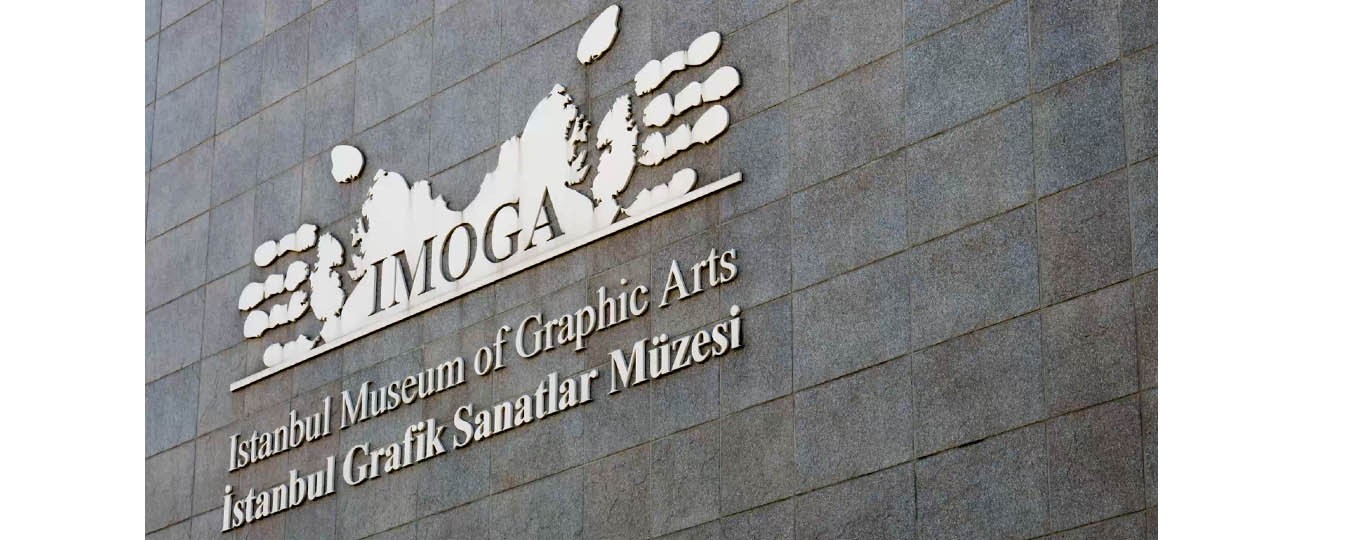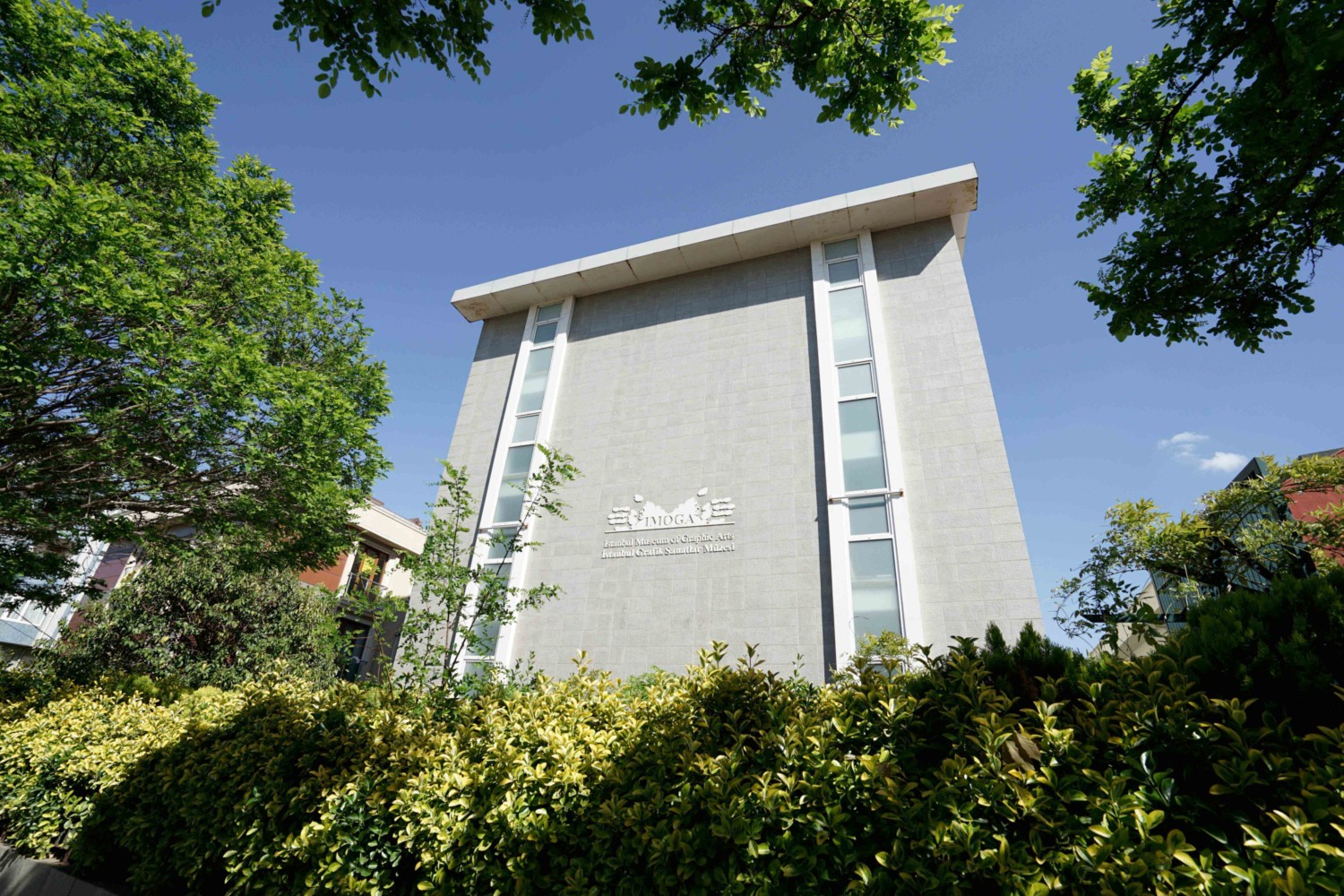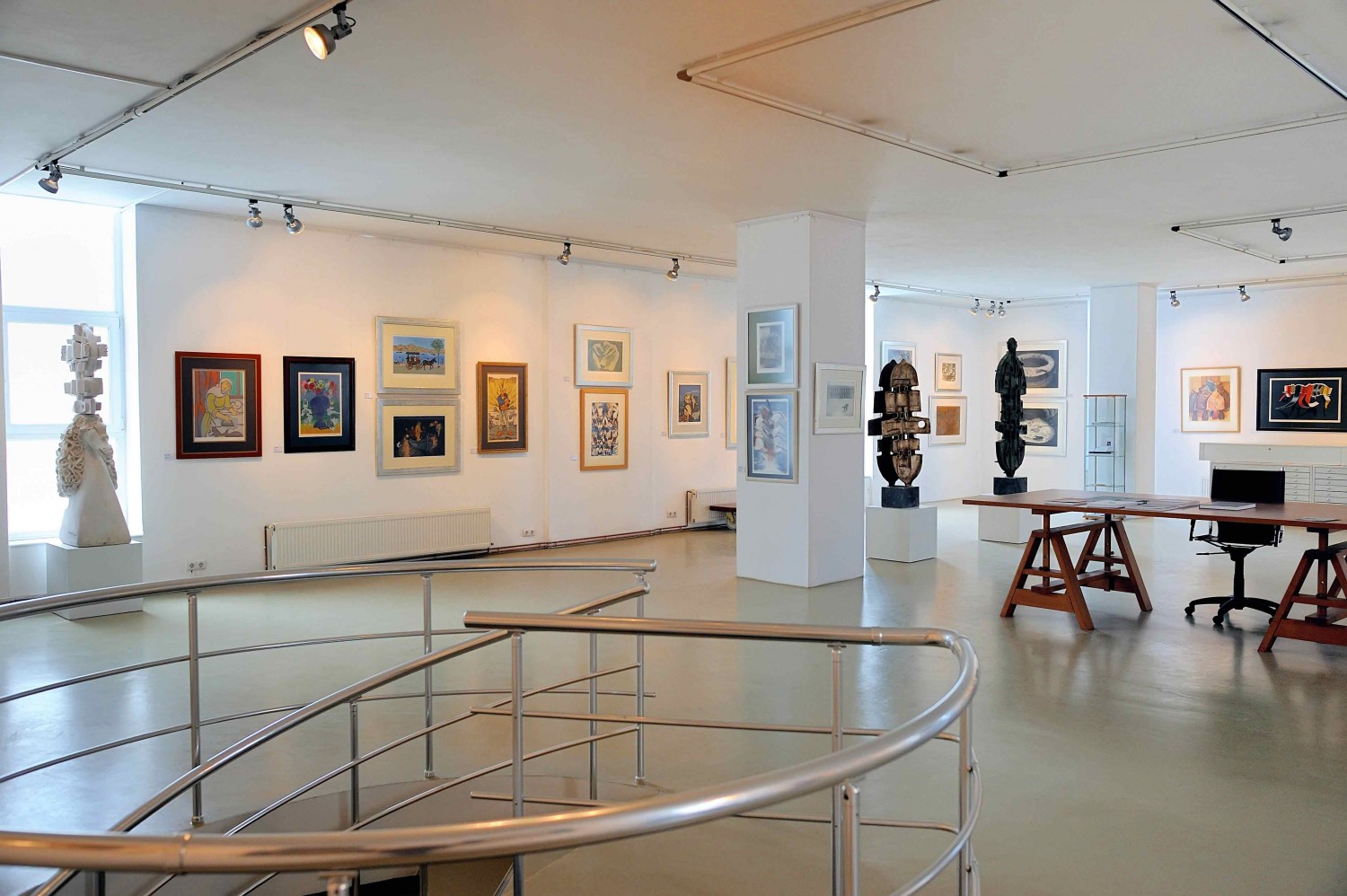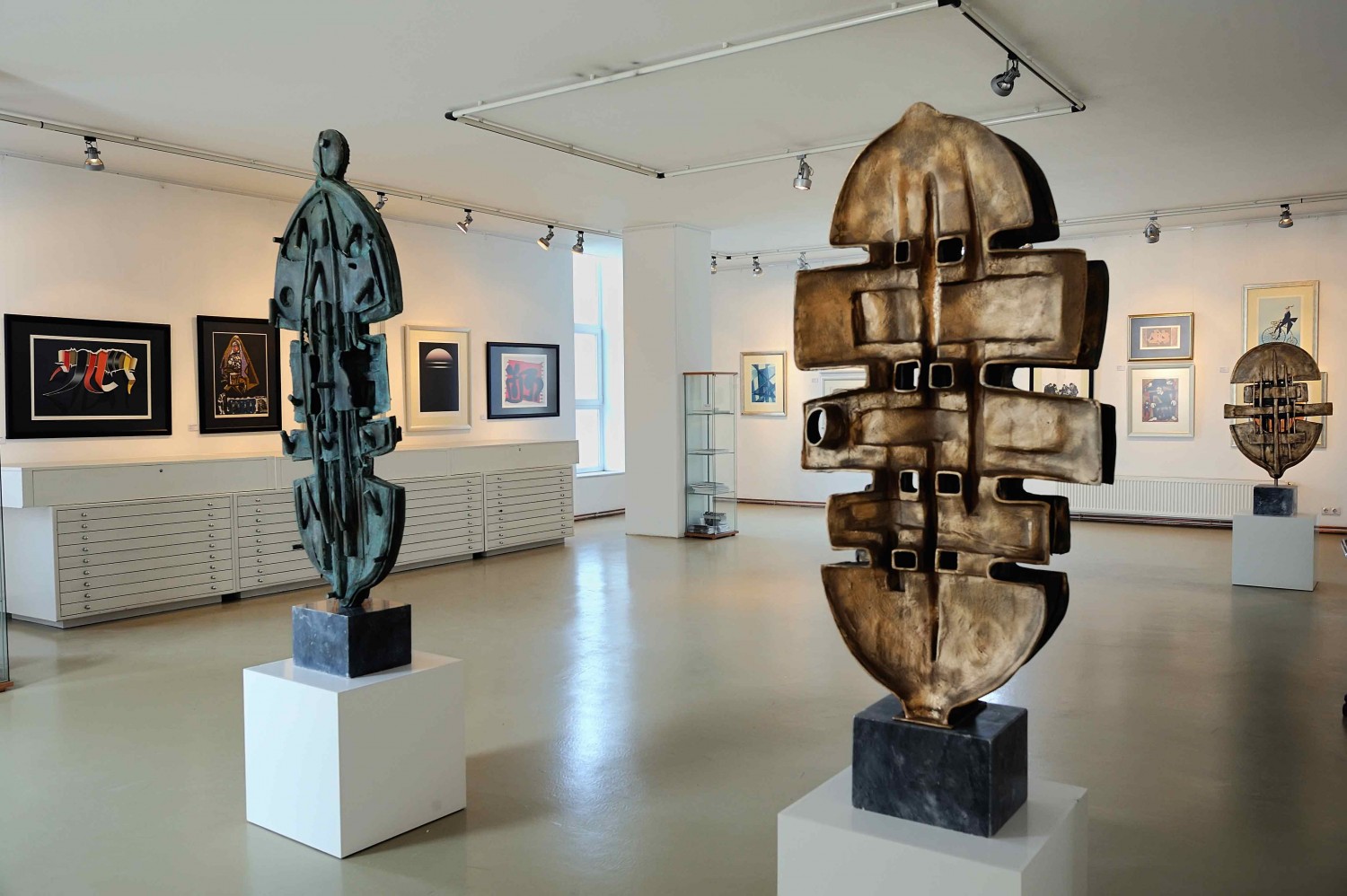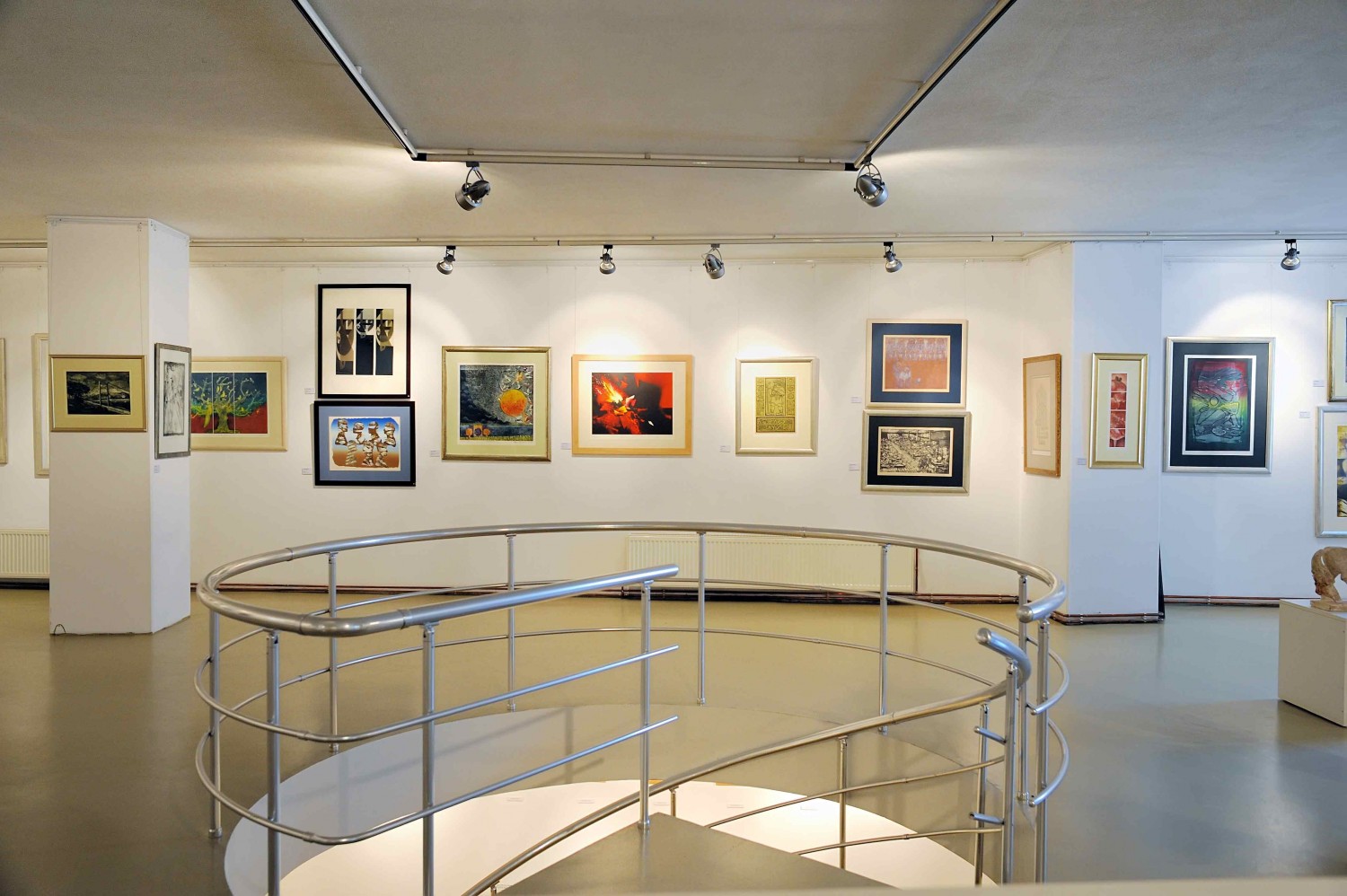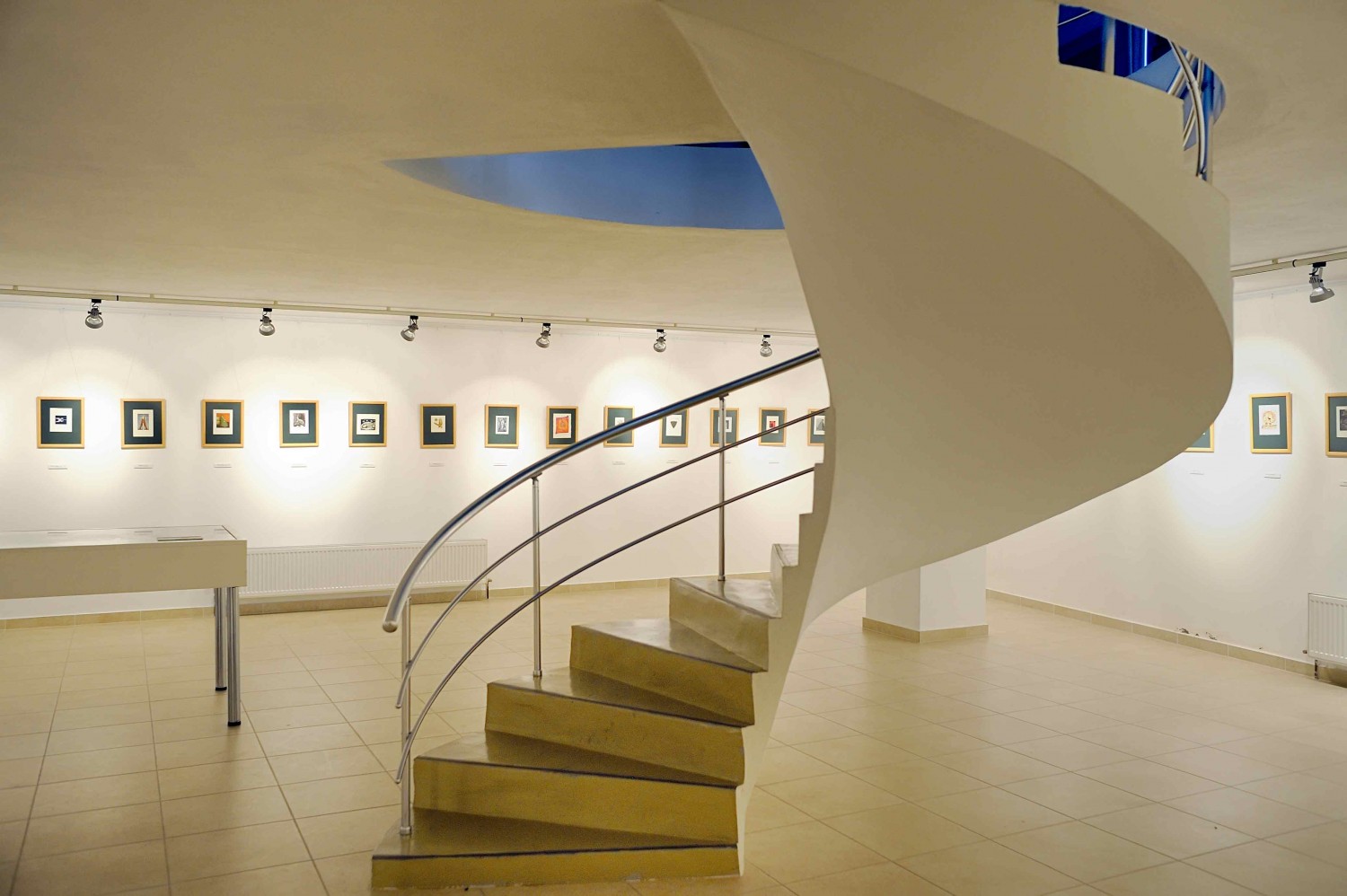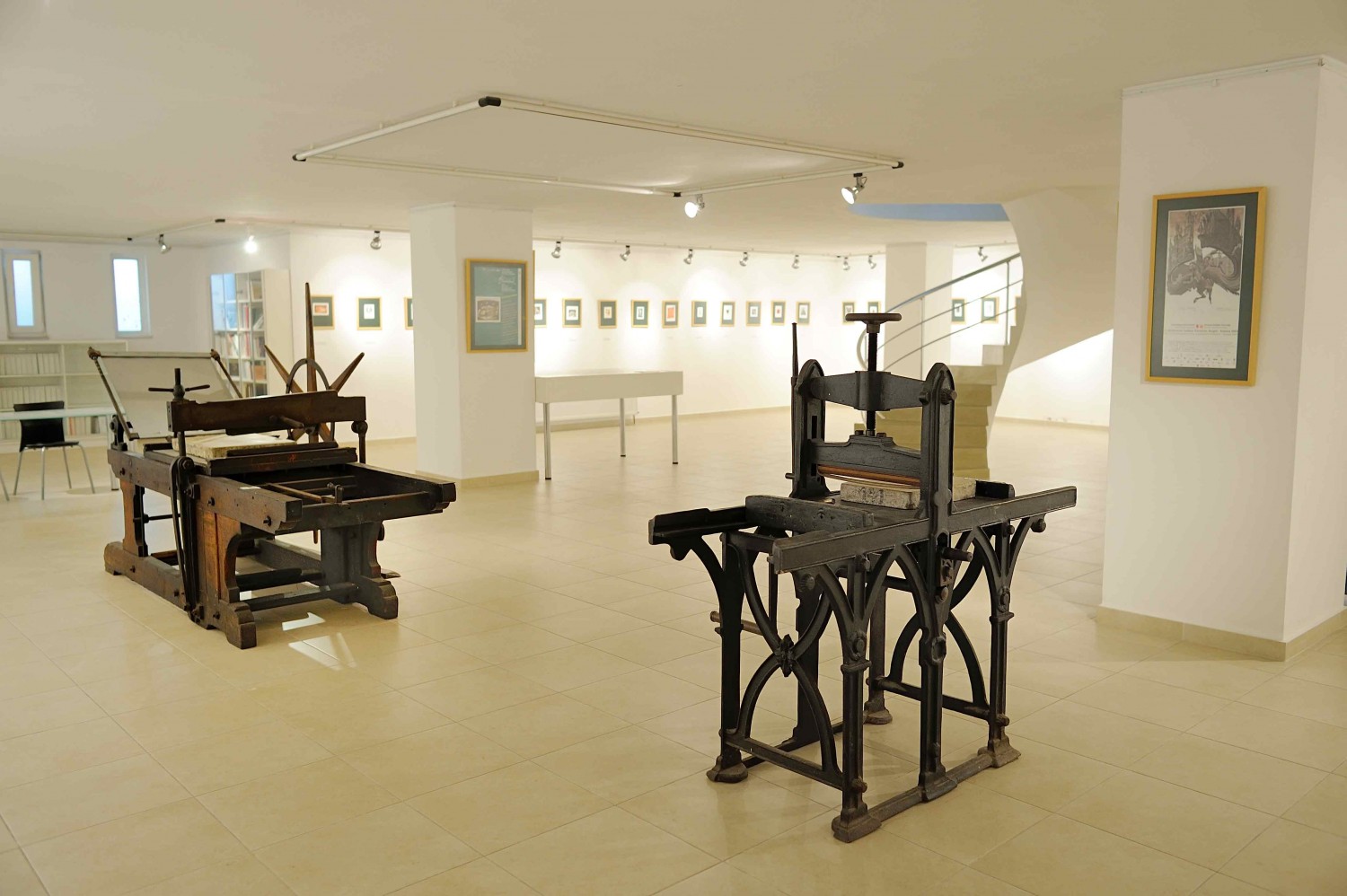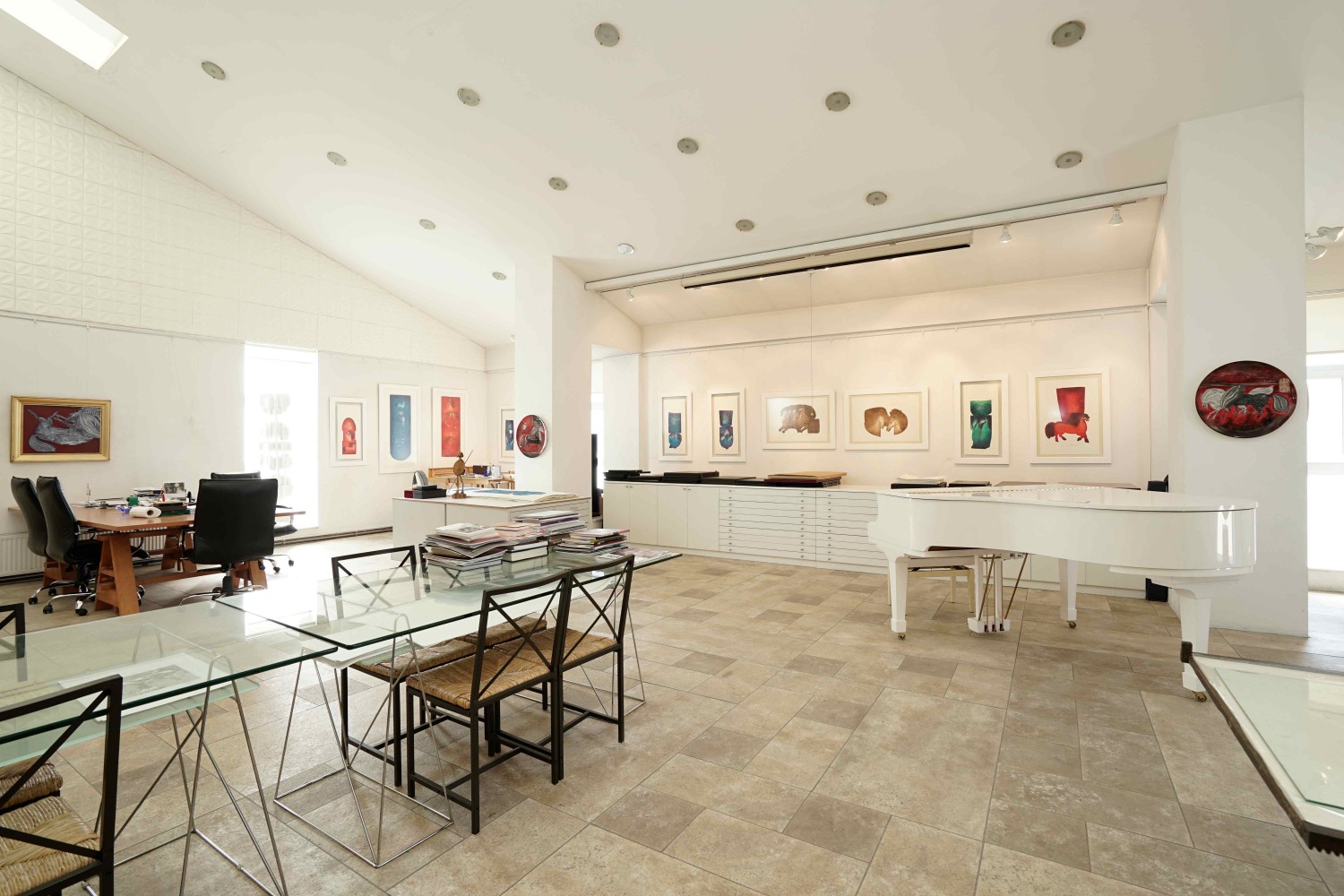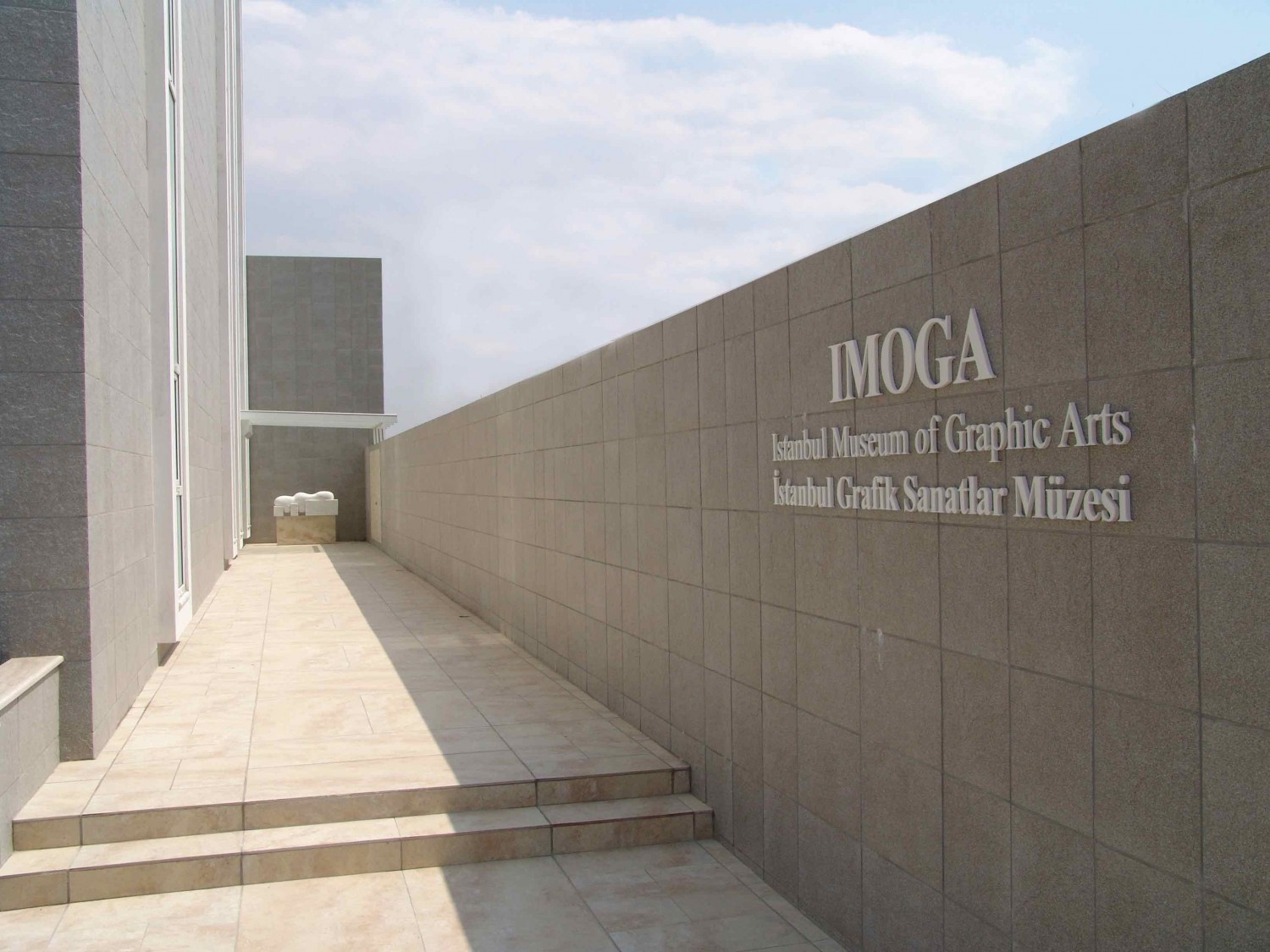A JOURNEY FROM WORLD-CLASS STUDIOS TO IMOGA, A LIVING MUSEUM
The works produced in the world-class private studios established by Süleyman Saim Tekcan, gave life to IMOGA, one of the very few printmaking museums in the world. In order to explain the journey of IMOGA, it would be best to look at the history of the studios established with Tekcan’s educator and artist character and his inclusive spirit, first at Kuyubaşı, followed by Söğütlüçeşme then the Artess House of Art at Çamlıca.
Süleyman Saim Tekcan, who founded many of the printmaking studios throughout universities in Turkey, thereby ensuring training in the printmaking field at these institutions, established his first private studio in 1974 in Kuyubaşı. The purpose of this studio was to have a designated place for Tekcan to make his own artistic productions. Tekcan intended to produce only his own etching and screen prints, and he conducted the manufacture of all of the studio equipment, such as the etching press, screen printing machine and drying racks, by personally implementing the technical drawings from sample projects he brought from Germany. This studio was the only private studio in Turkey outfitted with technological equipment to this degree in the printmaking field at the time. Thus, the idea of sharing his studio with other artists arose in Tekcan's mind. Nurullah Berk was the first artist to produce prints at the studio. Later, Gündüz Gölönü, Ferruh Başağa and Neşet Günal, respectively produced prints at this studio. Over time, the need for larger space became evident and the studio moved to its new location in Söğütlüçeşme in June 1977.
After the studio moved to Söğütlüçeşme, it went to a restructuring. Since this studio had broader physical space than the previous one, it also brought the idea of expanding printing possibilities and creating an artistic meeting center. Tekcan wanted to create a place where artists would come together, discuss and debate art, and produce works at the same time. Towards the mid 70's, this studio soon ceased to be just a studio, but became a common meeting point full of art discussion, frequented by artists with its welcoming atmosphere. It was around this time that, Cihat Burak, Avni Arbaş, Emin Barın, Nedim Günsur, Elif Naci, Zühtü Müridoğlu, Semih Balcıoğlu, Ali Teoman Germaner, Erol Akyavaş, Ferruh Başağa, Burhan Uygur, Devrim Erbil, Mehmet Güleryüz, Özer Kabaş, Eren Eyüboğlu, and other leading artists of the Turkish art world including Veysel Erüstün not only produced work in this studio, but also contributed to the creation of this special place by organizing artistic discussion sessions.
In this studio at Söğütlüçeşme, Tekcan's classmate İsmail Avcı also contributed to the artist works. In addition to all these artists who came together for the professional production and dissemination of Turkish original prints, many writers and artists also attended these conversations in the studio. Şahap Balcıoğlu, Aziz Nesin, Bertan Onaran, Malik Aksel, Turhan Selçuk, Mehmet Ali Aybar and Hamit Kınaytürk were among those who visited the studio for these discussions. Many of the artists working at the studio learned the practice of printmaking from Süleyman Saim Tekcan. Tekcan personally gave his time and attention to all the artists working in his studio and guided them with his knowledge during the production of their prints. Most of the time, he motivated them to make prints, and enabled them to get acquainted with and experience this process, which they were not previously accustomed to.
Tekcan decided to further develop the studio facilities and for this purpose, he bought a plot of land in Küçük Çamlıca in 1982 in order to build his own studio. What he wanted to do was to build a larger, international art house, beyond the studio. All of his artist friends enthusiastically supported this project. The building, the project of which was undertaken by the painter and architect Cihat Burak, was designed to satisfy multiple needs and was completed in 1984. Thus, Tekcan presented Artess Çamlıca Art House to serve Turkish art on Saturday, October 13, 1984 with a grand opening attended by 1000 people. The studio housed all the facilities that a modern studio demanded, including equipment to accommodate all printing techniques such as lithography, serigraphy and etching. With its large galleries, a large print archive, library and guesthouse, it became an exemplary print studio structure of international scale.
Cihat Burak undertook the architecture of the building. In addition, many artists made artistic contributions to the facility. At the entrance of the building, there is a concrete relief by Zühtü Müridoğlu and another one made by Mustafa Pilevneli. A terracotta wall panel by Ali Teoman Germaner decorates the building on the exterior. There is a ceramic fireplace designed by Atilla Galatalı for the residence floor. One of the most important features of the studio is that it is clean and tidy. Undoubtedly, this order stems from Süleyman Saim Tekcan's meticulous nature. It should not be forgotten that a quality, world-class print can be achieved with clean paint, clean paper and clean printing. The art house in Çamlıca was a unique place with an internationally significant accumulation comprising a massive print archive, where more than 60 artists came and work and more than 500 works were produced. Within time, the studio hosted many of Turkey’s renowned artists and became the center for the highest volume of printmaking productions in the country, while also hosting intellectual and artistic debates. Artess enabled printmaking, which could be sold at more affordable prices than painting, to be purchased by a broader audience, thereby ensuring that it entered homes, business centers, hotels and offices.
Artess Çamlıca Art House was a significant step towards the development and dissemination of art in Turkey. It served as a studio that opened its doors to the artists of our country, prepared the environment for their printmaking, and provided technical service. In addition to the secure production of limited prints for all artists, it also maintained its reliable reputation in the destruction of molds at the end of printing. Turkish artists who worked in the studio were selected from among Turkey's leading artists. At the period of its founding, priority in selection was given to those who were mostly from Group D, and more seasoned artists. Selection of foreign artists was made mostly from among those who were motivated and requested an opportunity to work at the studio. The artists worked at Artess Çamlıca Art House produced with the condition that in lieu of paying fees, they would allot a share of the entire print edition of the works they produced there. The artists chose the appropriate printing technique for their pictorial expression. The molds they produced were the property of the artist, and particular care was taken to ensure that the artist was in the studio during the printing process. The artist and Süleyman Saim Tekcan jointly decided on the number of works to be printed. During the post-printing signing phase, the artist and studio clerks together meticulously carried out the work of enumerating the prints and destroying the mold.

